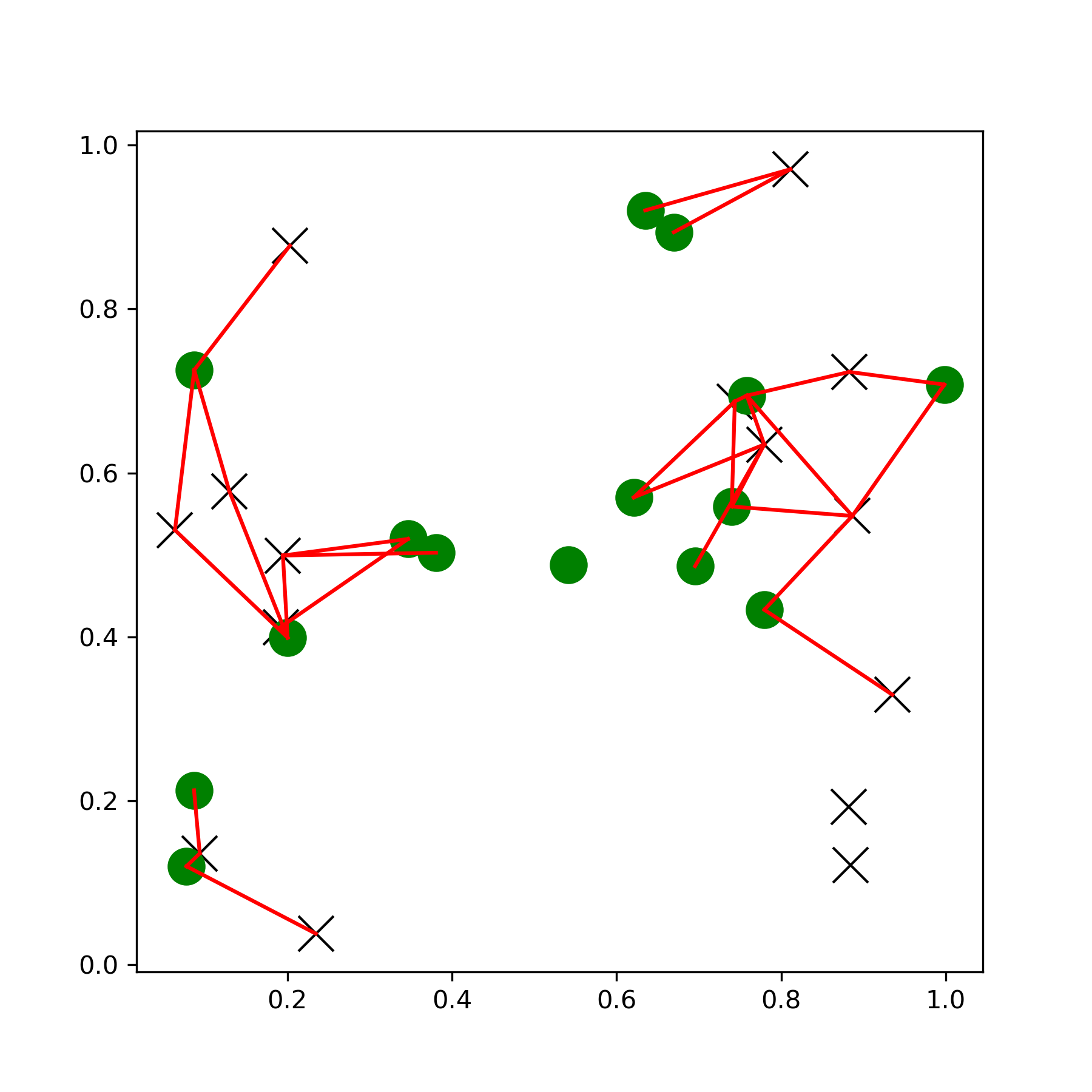query_ball_tree(self, other, r, p=2.0, eps=0)
The tree containing points to search against.
The maximum distance, has to be positive.
Which Minkowski norm to use. p has to meet the condition 1 <= p <= infinity
.
Approximate search. Branches of the tree are not explored if their nearest points are further than r/(1+eps)
, and branches are added in bulk if their furthest points are nearer than r * (1+eps)
. :None:None:`eps` has to be non-negative.
For each element self.data[i]
of this tree, results[i]
is a list of the indices of its neighbors in other.data
.
Find all pairs of points between :None:None:`self` and other
whose distance is at most r.
You can search all pairs of points between two kd-trees within a distance:
>>> import matplotlib.pyplot as plt
... import numpy as np
... from scipy.spatial import KDTree
... rng = np.random.default_rng()
... points1 = rng.random((15, 2))
... points2 = rng.random((15, 2))
... plt.figure(figsize=(6, 6))
... plt.plot(points1[:, 0], points1[:, 1], "xk", markersize=14)
... plt.plot(points2[:, 0], points2[:, 1], "og", markersize=14)
... kd_tree1 = KDTree(points1)
... kd_tree2 = KDTree(points2)
... indexes = kd_tree1.query_ball_tree(kd_tree2, r=0.2)
... for i in range(len(indexes)):
... for j in indexes[i]:
... plt.plot([points1[i, 0], points2[j, 0]],
... [points1[i, 1], points2[j, 1]], "-r")
... plt.show()

The following pages refer to to this document either explicitly or contain code examples using this.
scipy.spatial._kdtree.KDTree.count_neighbors
scipy.spatial._kdtree.KDTree.query_ball_tree
Hover to see nodes names; edges to Self not shown, Caped at 50 nodes.
Using a canvas is more power efficient and can get hundred of nodes ; but does not allow hyperlinks; , arrows or text (beyond on hover)
SVG is more flexible but power hungry; and does not scale well to 50 + nodes.
All aboves nodes referred to, (or are referred from) current nodes; Edges from Self to other have been omitted (or all nodes would be connected to the central node "self" which is not useful). Nodes are colored by the library they belong to, and scaled with the number of references pointing them